Roof Leak and Homeowners Insurance

Roof Leak and Homeowners Insurance –
In your home, the one thing standing in between you and the harmful elements of nature can be your roof. The slightest damage to the roof of your home can bare the threat of letting those elements in. In turn threatening its structure and integrity. Spotting a roof leak starts with something as simple as noticing a spot in the ceiling that wasn't there. Damage can be present as curling/buckling shingles. It can also be as apparent as water dripping from your ceiling. However, spotting the problem is only the beginning. The real questions will begin when it comes to addressing homeowner’s insurance and whether or not this kind of damage can be covered. Cost of Repairs
The cost of repairing your home is usually covered at full replacement cost. Meaning, if the damage to an area of the house costs $15,000 to fix, the insurer will pay $15,000 less the deductible. Coverage for roof damage is treated differently than other structures used to build a home. Roofs will typically be covered for actual cash value. This value will depreciate based on wear and tear, as well as aging. Therefore, the calculations to determine roof depreciation could differ between insurers. However, the practice of insuring roofs for their actual cash value is widespread. Some insurers will offer an add-on. This add-on can aid in providing better roof coverage for the unexpected.What Causes a Roof Leak?
When it comes to a leaky roof, there can be many different factors that have led to the problem. Those factors can vary significantly. Factors could be severe weather, worn out shingles, or even water flow obstruction. For example, debris could block the flow of water, which can cause pooling. This excess of water builds up and can then begin to seep into the home. Homeowner’s insurance policies cover most roof leaks. Whether or not insurance companies will reimburse you for repairing a roof leak will depend on the original cause. Severe weather perils fall within the “open peril” list, which most homeowner’s policies list as covered, unless expressly excluded. The following fall under this category: - Wildfires
- Lightning
- Hail
- Windstorms
- Excess weight due to snow, ice, or sleet
- Sudden and accidental discharge of water or steam
Denial of Coverage
Claims filed that have resulted from general wear and tear or lack of maintenance on the homeowner’s part will usually be denied coverage. Maintenance issues that fall under this category could be damage due to the infestation of animals or insects. Acidic bird droppings could rot a roof due to their regular diet of highly acidic items. These bird droppings will start eating away at the shingles and sheathing on roofs. In turn, leading to leaking and structural issues. Honey bees destroy shingles by hollowing out sections of a roof to create their hive. If left alone, the weight of a honeycomb and the honey itself can stain or cause damage to the shingles and tar underneath them. A tricky one is damage due to mold or fungus; this might be excluded. However, if the conditions are a result of a covered incident, the cost will be included in the homeowner’s policy. Understanding Your Policy
The best way to understand your homeowner’s insurance policy is to reach out to your insurance agent! Ask for your policy declaration page, which will explain the perils that are covered or excluded. The best way to avoid or minimize roof damage is by staying on top of roof maintenance. This can include keeping the gutters clean, roof valley maintenance (which can prevent the build-up of debris), and using a trusted contractor with experience of proper installation methods. Using a contractor with the knowledge needed to choose quality materials and skills for proper installation can save a homeowner from many headaches in the future. If you suspect that your home is experiencing a leaky roof, call the team at Thompson Building Associates. Our professionals can assist you in finding the origin of the leak and addressing the problem. Remember, the longer the issue persists, the more time the damage will worsen, and repairs become more expensive. For more information, find us on Facebook or Instagram.  Roof Leak and Homeowners Insurance – In your home, the one thing standing in between you and the harmful elements of nature can be your roof. The slightest damage to the roof of your home can bare the threat of letting those elements in. In turn threatening its structure and integrity. Spotting a roof leak starts with something as simple as noticing a spot in the ceiling that wasn't there. Damage can be present as curling/buckling shingles. It can also be as apparent as water dripping from your ceiling. However, spotting the problem is only the beginning. The real questions will begin when it comes to addressing homeowner’s insurance and whether or not this kind of damage can be covered.
Roof Leak and Homeowners Insurance – In your home, the one thing standing in between you and the harmful elements of nature can be your roof. The slightest damage to the roof of your home can bare the threat of letting those elements in. In turn threatening its structure and integrity. Spotting a roof leak starts with something as simple as noticing a spot in the ceiling that wasn't there. Damage can be present as curling/buckling shingles. It can also be as apparent as water dripping from your ceiling. However, spotting the problem is only the beginning. The real questions will begin when it comes to addressing homeowner’s insurance and whether or not this kind of damage can be covered. 